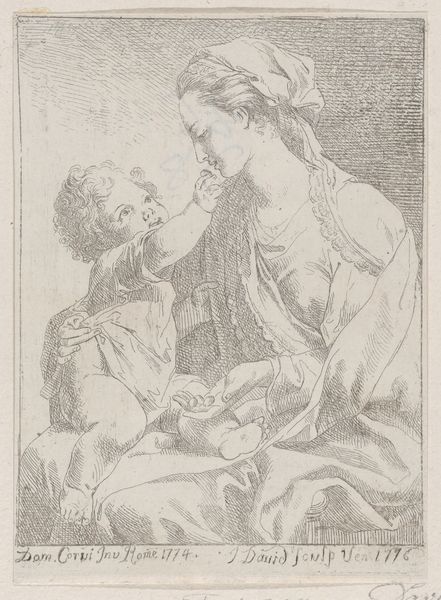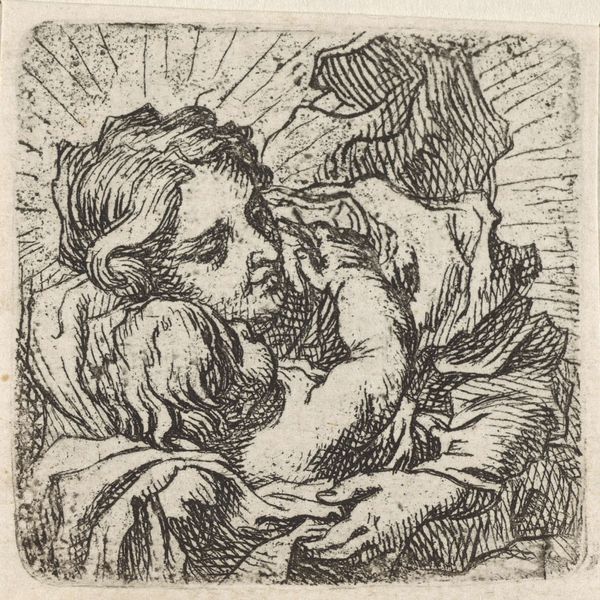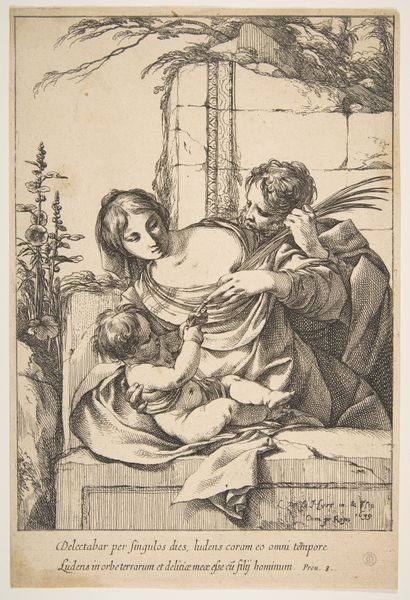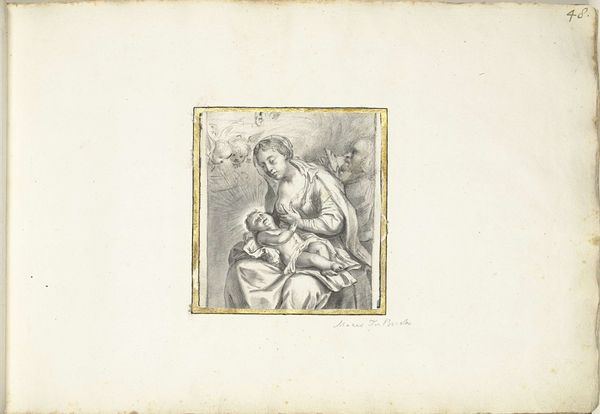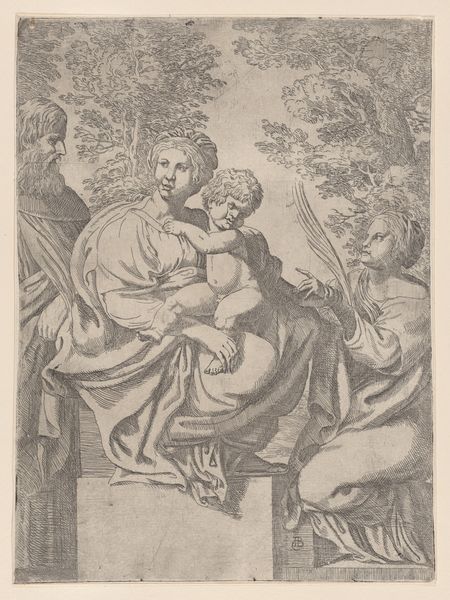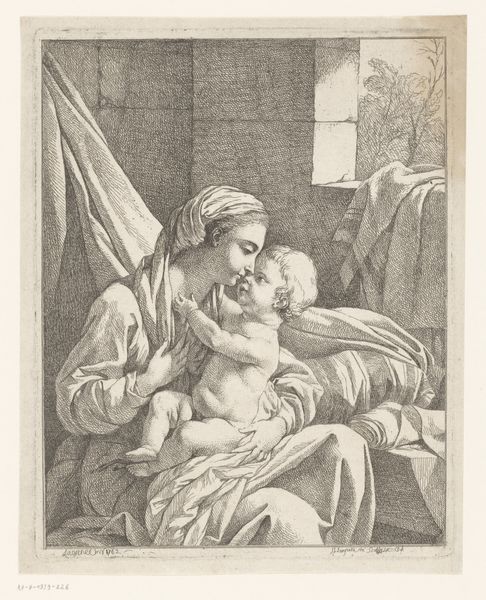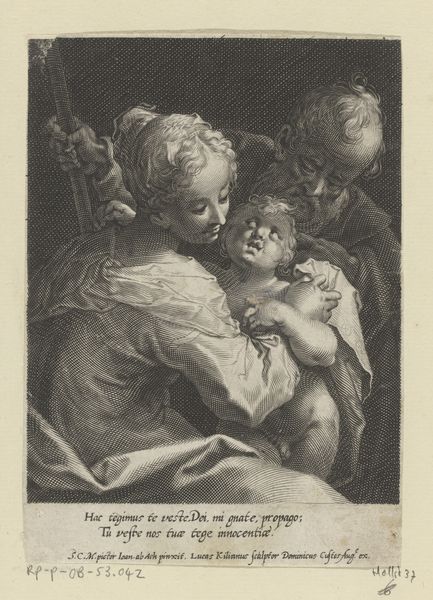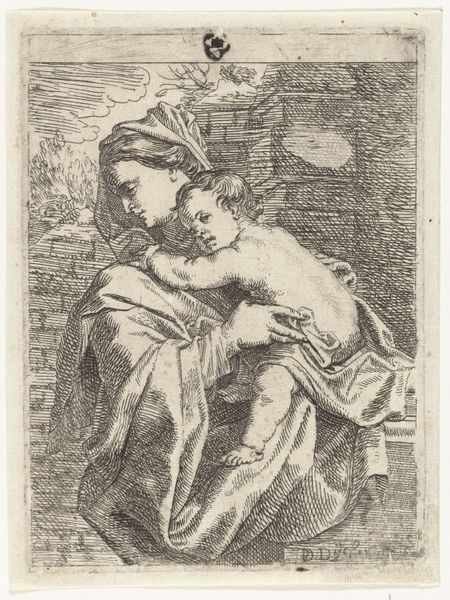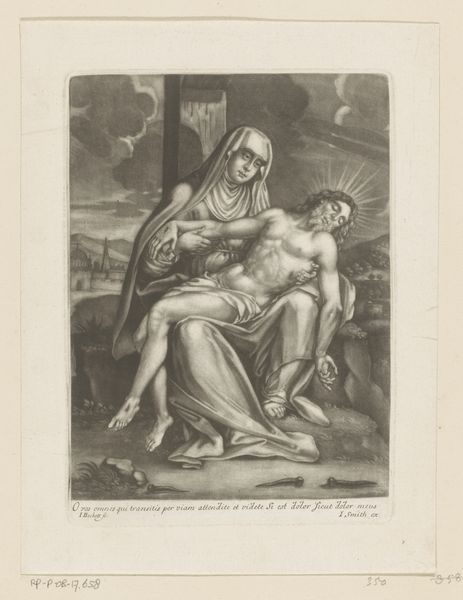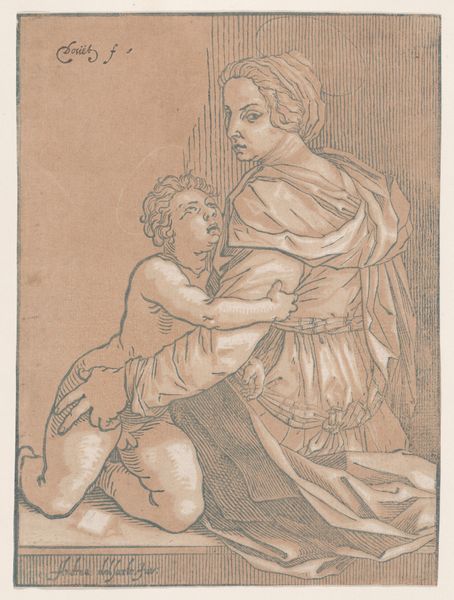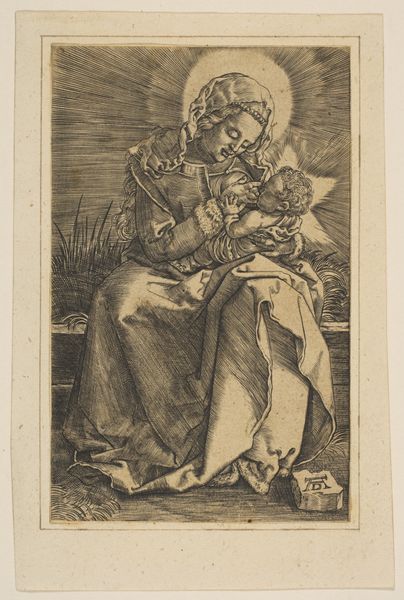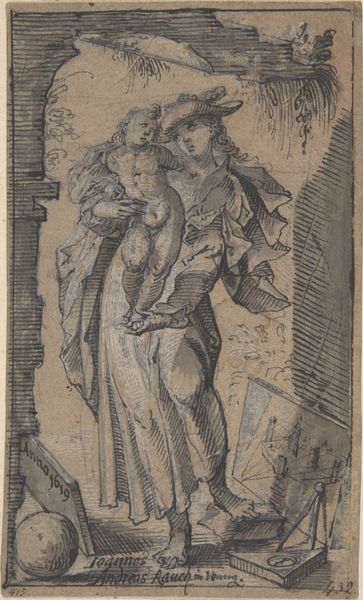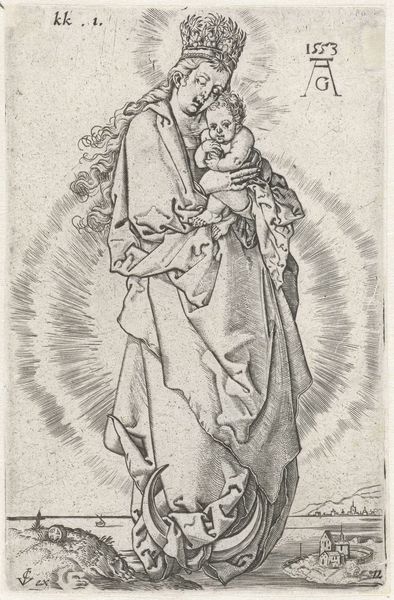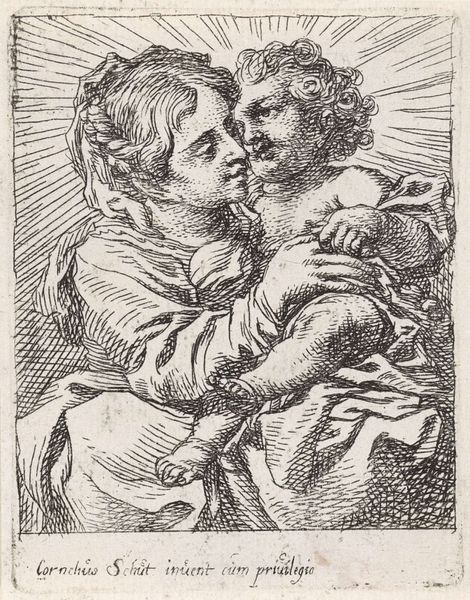
print, engraving
#
portrait
#
baroque
# print
#
pen sketch
#
old engraving style
#
figuration
#
line
#
pen work
#
engraving
Dimensions: height 180 mm, width 137 mm
Copyright: Rijks Museum: Open Domain
Curator: This print, titled "Maria met Kind," attributed to Lorenzo Loli, dates somewhere between 1622 and 1691. The piece presents us with an intimate portrayal of Mary and the infant Jesus rendered with fine engraving techniques. Editor: The linear quality immediately strikes me. There's a delicate fragility to the pen work, especially in the drapery folds. It feels tender. Curator: Indeed. The Baroque period, even in printmaking, was deeply connected to specific social and religious contexts. This image likely served devotional purposes, perhaps circulating amongst a particular religious order or a pious individual. Considering it is a print, what do you make of it? Editor: The formal choices—the lines creating the halo, the contrasting densities of line suggesting shadow—all work to enhance the image's ethereal quality. The materiality here is crucial. Curator: Yes, engraving requires specialized tools, artisanal knowledge, and significant labor. This would influence both the cost and accessibility of the image, thereby affecting its intended audience. Consider, too, the availability of paper and the economic structures surrounding artistic production at the time. It adds a complex layer, doesn't it? Editor: Absolutely. There is the interesting detail in Mary's gesture: her almost hesitant, very tender hand hovering over her son. Curator: The hand almost mirrors her gently inclined head! I'm curious: what meaning or reading do you infer from Loli’s stylistic choices and its implications? Editor: The relatively spare use of line focuses our gaze intently on the subjects' faces. And the halos further abstract, even de-materialize them. This is, in that sense, meant to represent the divine, not strict reality. The medium then itself helps elevate the message. Curator: Understanding the material constraints of early printmaking alongside the image's devotional purpose enriches our view of the labor and the beliefs of Loli’s time. Editor: Ultimately, it is how the basic material elements combine to create something transcendent, a poignant image that lingers.
Comments
No comments
Be the first to comment and join the conversation on the ultimate creative platform.
